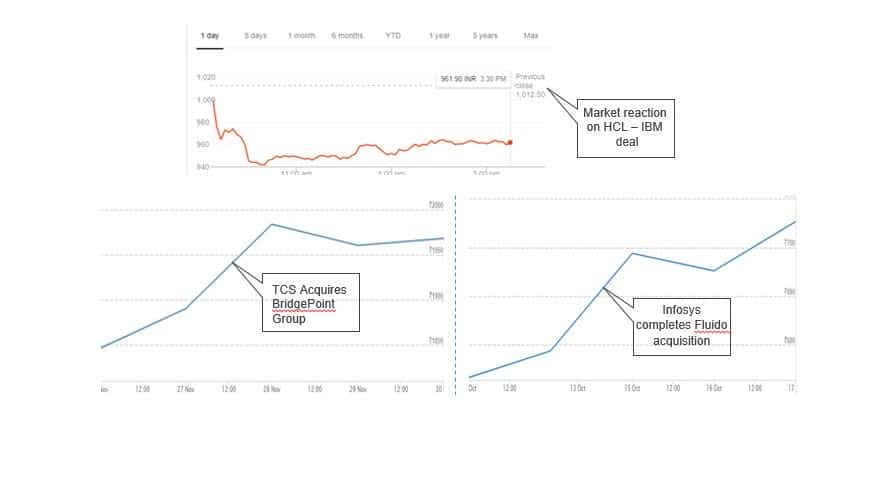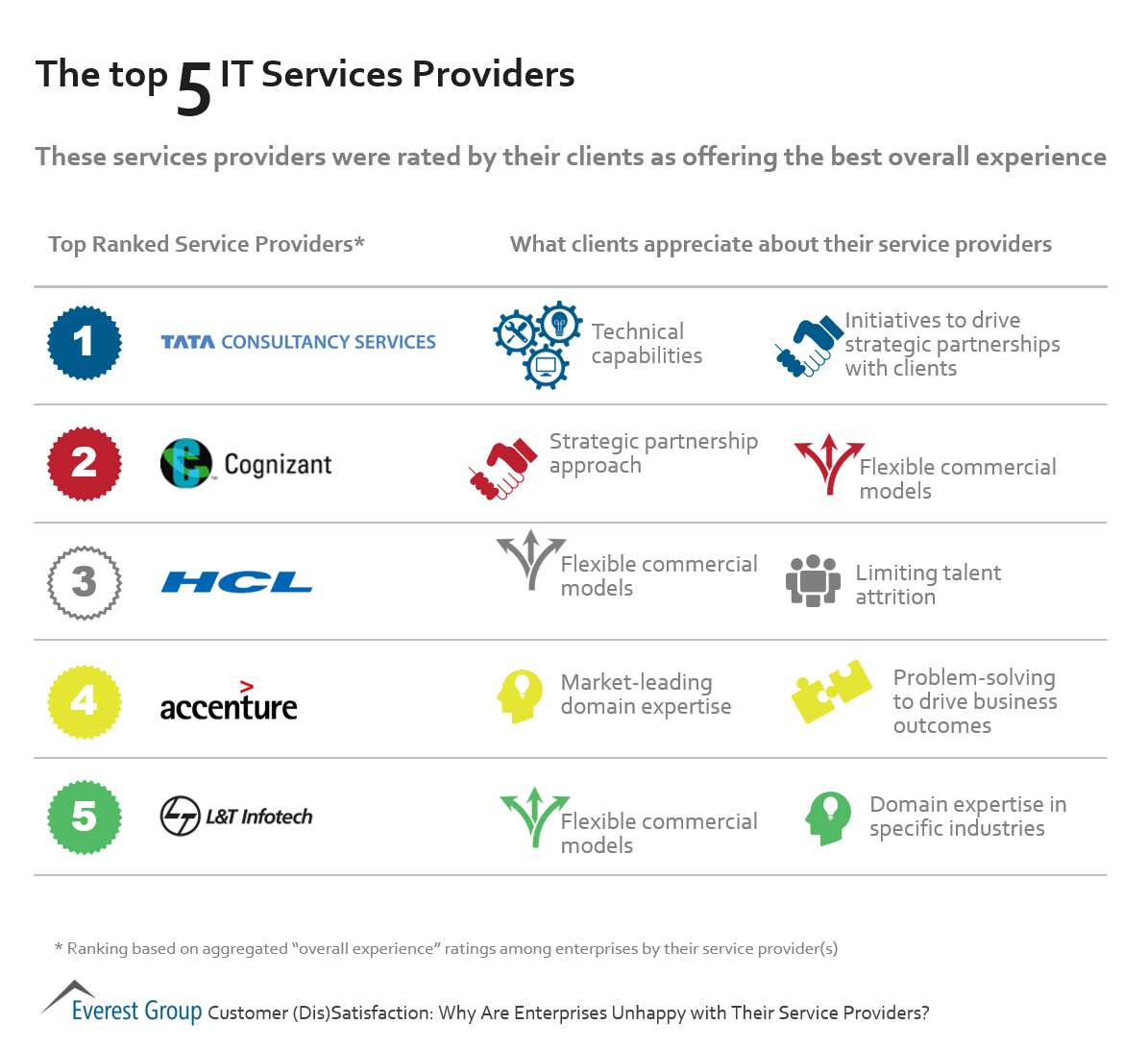On December 6, 2018, HCL announced it had acquired seven IBM products across security, commerce, and marketing for a record US$1.8 billion. To provide a financial context to this acquisition: HCL, India’s third largest IT services provider, invested about 22 percent of its annual revenue to bolster its products and platforms portfolio – what it refers to as its Mode 3 portfolio – which barely contributes to 10 percent of its annual revenue.
What strategic outcomes could HCL potentially derive from this deal?
At first glance, the acquisition may seem to be a strategic fit for HCL. But when we dug deeper, we observed that while some of the IP plugs gaps in HCL’s portfolio, others don’t necessarily enhance the company’s overall capabilities.
This analysis raises meaningful questions that indicate there are potential potholes that challenge its success:
The acquisition definitely is a bold move by HCL, which may seem meaningful from an overall financial investment and ROI perspective. However, the subdued investor confidence reflects poor market sentiment, at least at the start. Although this could be considered a short-term consequence, HCL’s investments in these legacy products is in stark contrast to the way the rest of industry is moving forward.
 On the day of the acquisition, HCL’s stock price fell 7.8 percent, signaling negative market sentiments and thumbs down from analysts. In contrast, the market behaved differently in response to acquisitions by HCL’s peers in the recent past.
On the day of the acquisition, HCL’s stock price fell 7.8 percent, signaling negative market sentiments and thumbs down from analysts. In contrast, the market behaved differently in response to acquisitions by HCL’s peers in the recent past.
To prove the market wrong, HCL needs to focus its efforts on developing and innovating on top of these products; developing synergies with its ADM, infrastructure, and digital services; alleviating client apprehensions; and providing a well-defined roadmap on how it plans to sustain momentum leveraging these products over the long term.
What is your take on HCL’s acquisition of these IBM products? We would love to hear from you at [email protected] and [email protected].
Anil Chanana let the cat out of the bag at an analyst call earlier this year. The chief financial officer of HCL Technologies said he expects half the growth for the current fiscal to come organically. “If I take 10.5% as being the middle of the range, I am cutting it exactly in half — 5.25% is organic and 5.25% is inorganic.”
Industry experts believe successful enterprises of the future will need to develop symbiotic relationships across the ecosystem to exploit market opportunities and accomplish goals.
But unlike most peers, HCL has used its balance sheet to win new business by buying assets, argues Peter Bender-Samuel, chief executive of consultancy firm Everest. In transactions with both CSC (now DXC) and IBM, HCL acquired the rights to support legacy software assets by offering CSC and IBM with large upfront payments. In exchange, it received a large ongoing contract to maintain the software. In some cases, HCL will provide upgrades, jointly market the software and receive a part of sales.
But in performance rankings, TCS, Cognizant, HCL, Accenture and L&T Infotech are honored for creating best ‘overall experience’ for clients
Despite large-scale investments by service providers, 48 percent of enterprises surveyed by Everest Group are not satisfied with their service provider’s performance. In particular, service providers are performing poorly as “strategic partners” for enterprises and score an average rating of five on a scale of one to ten.
There are also significant gaps in enterprises’ expectations and service providers’ performance with respect to innovation, creative engagement models and day-to-day project management.
“Most service providers are perceived to be technically competent, but technical expertise and domain expertise are considered ‘table stakes’ by enterprises across industries,” said Chirajeet Sengupta, partner at Everest Group. “Enterprises now expect their service providers to move beyond day-to-day delivery and focus on larger strategic business issues. Unfortunately, service providers still have a long way to go to meaningfully engage clients and become strategic partners, and that is a significant concern for the industry. This research signals the wake-up call and offers service providers guidance on how to strategize their engagement approach and prioritize investments to meet mounting customer expectations.”
In general, enterprises believe that mid- and small-sized service providers bring considerably more innovation and engagement flexibility than their larger counterparts. In fact, enterprises believe some large service providers have become lethargic and complacent and are indifferent to client requirements.
In contrast to these sentiments, five predominantly large service providers received the honor of creating the best “overall experience” for clients, based on client commentary and weighted aggregate ratings given by interviewed enterprises on key assessment dimensions.
These results and other findings are explored in a recently published Everest Group report: “Customer (Dis)Satisfaction: Why Are Enterprises Unhappy with Their Service Providers?” The research summarizes over 130 interviews conducted with enterprises across the globe regarding the capabilities of their service providers with respect to applications, digital, cloud and infrastructure services. The report also details the technology investment priorities of enterprises and opportunity areas for service providers.
***Download Complimentary High-Resolution Graphics***
Key takeaways from the research findings are summarized in a set of high-resolution graphics available for complimentary download here. The graphics may be included in news coverage, with attribution to Everest Group.
The graphics include:

These services providers were rated by their clients as offering the best overall experience
Buyer-to-Service Provider Alignment on Business Goals – Some Do Better Than Others
Learn more about our healthcare & life sciences research services

©2023 Everest Global, Inc. Privacy Notice Terms of Use Do Not Sell My Information
"*" indicates required fields